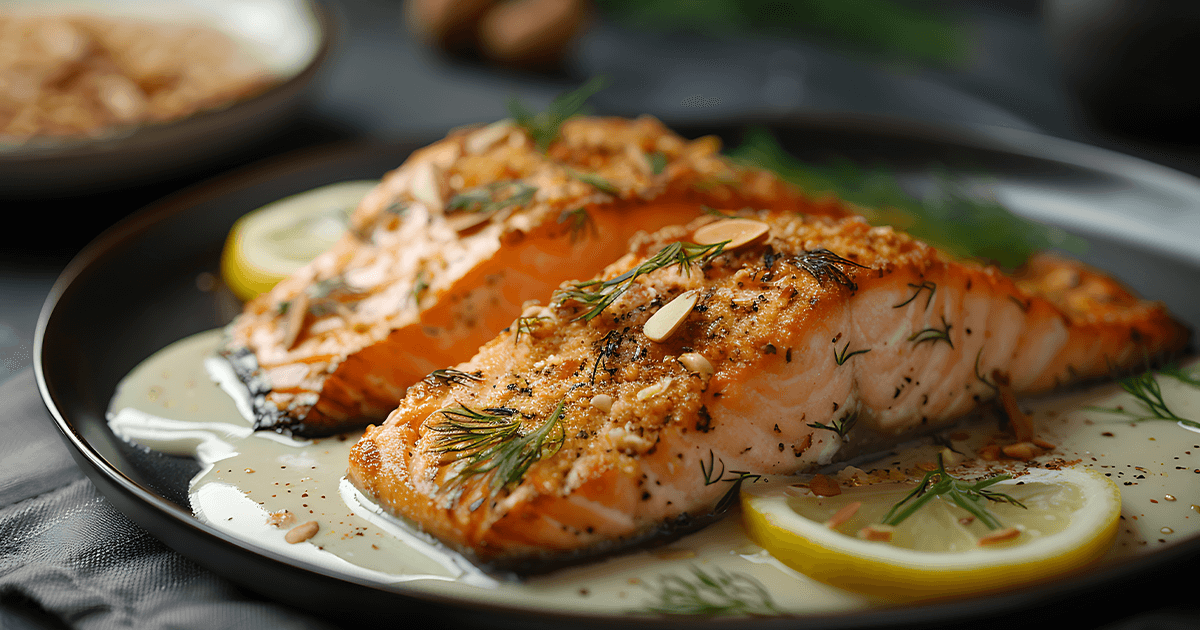Almond-Crusted Salmon with Honey Glaze
Recipes
Are pollinators really that big a deal?
Yes! While claims have been somewhat overblown — bees are not responsible for 1 out of 3 bites of food we eat, and humanity would probably not go extinct without them — bees and other pollinators play an essential role in many ecosystems.
Learn more in our blog: Exactly How Much Do We Need Bees?
Pollination from wild bees, butterflies, wasps, amphibians, and other species keeps wildflowers growing, which plays a role in the food chain. Herbivores gotta eat too, ya know?
Meanwhile, pollination from honey bees is an essential step to producing many of our favorite fruits, vegetables and nuts.
Take, for example, almonds. California produces something like 80% of the worlds almond supply — over a million acres' worth. No amount of wild bees can pollinate all that, so local beekeepers from all over the U.S. truck their hives over to California and let their bees go, well, nuts.
Unfortunately, the honey bees make from almond pollination...ain't that great. We wait until those American beekeepers are back home in Washington, New England, or Colorado to bottle their honey for our Local Hive honey blends.
100 Years of 100% U.S. Honey
This recipe is part of our #100waystousehoney series, celebrating 100 years of 100% U.S. honey with honey hacks, honey tips, and honey recipes.
Throughout 2024, you can shop our limited-edition 1924 Golden Age Wildflower honey blend. It's an exclusive, 100% U.S. wildflower honey blend with a mellow, but flowery taste.
Now that you've worked up an appetite for pollinators: let's get cooking.
INGREDIENTS
1 1/4 pounds salmon, cut into 4 fillets3/4 cup roasted salted almonds, finely chopped
1/4 cup sesame seeds
2 TBSP olive oil , divided use
salt and pepper to taste
3 TBSP honey
2 TBSP soy sauce
1/2 tsp minced garlic
1 lemon, juiced
Optional garnish: chives, sesame seeds, dillweed
DIRECTIONS
For the sauce: mix together honey, soy sauce and garlic. Add salt and pepper to taste. Set aside.For the salmon: Chop the almonds. Pro tip: once chopped, use the dull end of the knife to crush the almond pieces further. Mix together almonds and sesame seeds and pour onto a plate.
Brush olive oil evenly over the salmon fillets.
Press the top (not the skin) of each salmon fillet into the almond mixture. Season the top of each fillet with salt and pepper.
Heat the remaining tablespoon of olive oil in a large pan over medium heat.
Place each salmon fillet, crust side down, into the pan and cook for 5 minutes, checking occasionally to make sure the crust isn't burning. Flip and cook for 5-7 minutes or until salmon is cooked through.
Transfer salmon to a serving platter and pour the reserved honey garlic sauce over the top. Garnish with chives, sesame seeds, or dillweed.




